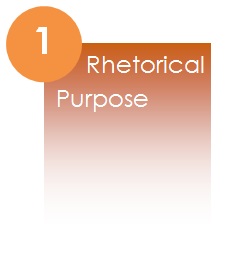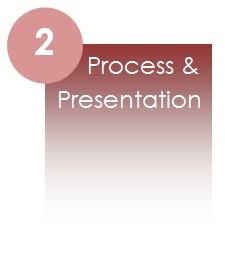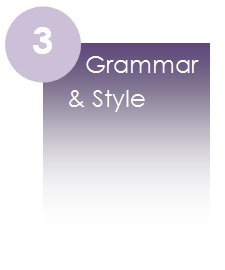Overview
Each piece of writing—whether an e-mail, an academic paper, a blog post, or a professional proposal—can be analyzed and evaluated according to a variety of qualities, from grammatical correctness to coherent paragraphing, from interaction with sources to logical development, and so on. Some qualities matter more than others for particular audiences and particular types of writing, so it’s valuable to understand the various qualities readers commonly recognize as important. Below we’ve identified five broad areas for evaluating writing, which we call the Franklin Five. The Franklin Five encompass commonly accepted rubrics for assessing writing, rubrics you’ll find repeated (with some variations in wording) in many places outside Franklin.
At Franklin, you’ll see the Franklin Five used repeatedly in the grading rubrics for writing assignments. This section of the Writing@Franklin website introduces the Franklin Five and explains each one. As a resource for student writers, this page will help you develop a stronger grasp of the terminology commonly used to discuss written communication. If your instructor identifies particular areas of writing that you need to develop, he or she may direct you to the resources linked to this page or the pages going into greater detail about each of the five areas.

Rhetorical purpose refers to the particular aims of any piece of writing as determined by both the author and the occasion for writing. To do well on a writing project, you need to have a sense of the expectations held by readers in your field of work or study, as well as of your own reasons for writing. Your understanding of rhetorical purpose for a particular writing assignment is generally assessed by evaluating how well you adapt your original message to the constraints imposed by the audience’s expectations. A writer who is both savvy about rhetorical purpose and skilled in adapting his or her message can turn the constraints of any writing occasion into an opportunity to develop strong connections with members of the audience.

In developing formal academic and professional papers, you should expect to write in stages, creating one or more drafts on your way to producing a polished final product. To develop a paper as fully as required by a particular assignment, you should expect to complete pre-writing, drafting, peer-reviewing, revising, formatting, and proofing activities before submitting the finished product. Readers of your writing will assess your writing processes and presentation format according to how well the work you submitted incorporates feedback and reflects the depth and polish expected by the audience on that particular writing occasion.

While “good grammar” is too often seen as the only measure of “good writing,” writers nonetheless need to have a strong grasp of grammatical and stylistic conventions to write clear and engaging papers. To achieve these qualities of writing, you should be able to recognize and correct errors in mechanics and usage. At the sentence and paragraph level of writing, you should also consider verbal style, which in academic writing entails perspicuity, variety, and coherence (among other qualities). Readers generally assess this area of writing by considering how well your phrasing avoids disruptions caused by broken grammar, confused wording, and monotonous or repetitive phrasing, all while also engaging the audience with variety in sentence structure and diction.

The words, sentences, and paragraphs in every piece of writing should ideally convey information and expand upon ideas conducive to the achievement of the writer’s overall rhetorical purpose. The development of ideas is tied directly to the organization and arrangement of the written material itself, as well as to the depth and breadth of the writer’s treatment of the topic. Readers will assess the development of your ideas according to how analytically you treat your topic, how coherently and logically ideas and information are presented, and, most important, how well the focus, depth, and ordering of material works to achieve a particular aim suitable to the writing situation.

Academic and professional writing projects, more than most other types of writing (e.g., current events, fiction, popular essays, etc.), regularly and systematically draw on research to support the development of ideas. While not all of your writing projects will involve research, those that do should provide appropriate and effective introductions, explanations, and citations for research used in the paper itself. Readers will ultimately judge your research writing based on whether or not your references serve as assets to your writing project. To be assets, as opposed to liabilities, the sources need to be credible and appropriate for your rhetorical purpose, they need to be interpreted fairly and accurately, and, most important, they need to add something to your own original points, rather than just speak for you.
